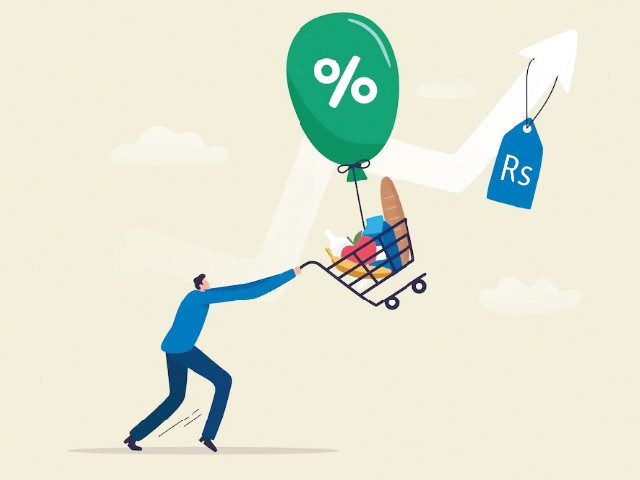
The inflation rate fell to 26.9% in October -- the lowest for ten months and more than expected -- strengthening the position of the central bank during the International Monetary Fund (IMF) talks against any demand for a raise in the interest rates.
The slowdown in the inflation rate was across the board, although the prices were still very high for the majority of the population of the country. The prices of non-perishable food items, like politically sensitive sugar, remained on the upward trajectory.
The Pakistan Bureau of Statistics (PBS) -- the national data collecting agency -- reported on Wednesday that the Consumer Price Index rose to 26.9% last month compared to a year ago. This was the lowest pace in the past 10 months.
The Ministry of Finance had projected inflation slowing down in the range of 27% to 29% in October. The government and the State Bank of Pakistan (SBP) may still miss their annual inflation target of 21% by a wide margin despite inflicting heavy costs on the exchequer and the businesses by keeping the interest rates high at 22%.
The monetary policy determination is expected to be an important issue during the Pakistan-IMF talks for the first review of the programme, which will begin today (Thursday). The central bank left the key interest rate unchanged two days ago. It said that the pace of inflation would see a marked slowdown, particularly from the second half of this fiscal year.
It further stated that on a long-term basis, the real interest rates were still positive –in a pre-emptive statement against any demand for an increase in rates by the IMF during the review talks.
Pakistan’s annual inflation rate accelerated to history’s highest-ever level of 38% in May due to supply shocks, currency devaluation and the absence of any checks on hoarding and profiteering.
Interim Finance Minister Dr Shamshad Akhtar on Tuesday said that due to high-interest rates, the increased cost of debt servicing has become a primary concern that ate almost the entire federal income during the first quarter of this fiscal year.
The pace of inflation slowed down in rural and urban areas while the deceleration was witnessed across food and non-food categories. The government significantly cut the fuel prices last month, which also helped change the inflation perception.
The interim government has increased the gas prices with effect from November 1st. However, its weight in the overall inflation index is around 1% and thus would not have any major impact on the reading.
The inflation rate eased to 25.5% in the cities, according to PBS and to nearly 29% in the rural areas where the overwhelming majority of the country lives.
The food inflation also decelerated to 28.9% in urban areas and 28.6% in rural, according to the PBS. The PBS reported that sugar was up to 75% more expensive last month than compared to a year ago.
There were hardly any consumable goods that had not seen their price shoot up in recent months over the past many months.
The core inflation, which is calculated after excluding the volatile energy and food prices, also slowed down in October to 18.5% in urban areas and 26.7% in rural areas -- far above the central bank’s interest rate.
The prices of food and non-alcoholic beverages were higher by nearly 27% last month compared to a year ago. The non-perishable goods saw one-third higher prices but the perishable goods prices marginally reduced on the back of better supplies.
The inflation rate for the transport consumer price group was 39% up due to constant increases in fuel prices in the past few months.
Wheat flour –the staple food for the majority of the people –saw up to 64% increase in their prices. There was an increase of 85% in the prices of spices, and 55% in tea rates; rice –another staple food item – saw a nearly two-thirds increase in prices, according to PBS.
In the non-food category, the electricity charges were over 50% higher than a year ago, and gas charges went up by 63%, according to PBS.
For the July-October period of the current fiscal year, the data showed that the average inflation rate stood at 28.5%, which was far higher than the official target of 21% for the current fiscal year. The average inflation rate for the first four months in the rural areas was 31.2% whereas it was 26.6% in urban areas.
Meanwhile, the Ministry of Finance on Wednesday increased the salaries of the public servants serving against the management pay scale by 45% to offset the impact of inflation on this class of society.
The maximum monthly salary for the management pay scale-I –the highest grade – was increased by 45% or Rs314,670 to Rs1.04 million. It is inclusive of house rent and utilities.
Similarly, the MP-II salary was also increased by 45% to Rs599,740 and for MP-III, it has now been fixed at Rs339,000 a month.


















COMMENTS
Comments are moderated and generally will be posted if they are on-topic and not abusive.
For more information, please see our Comments FAQ